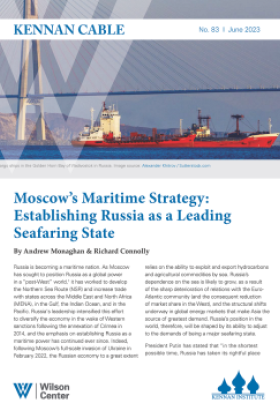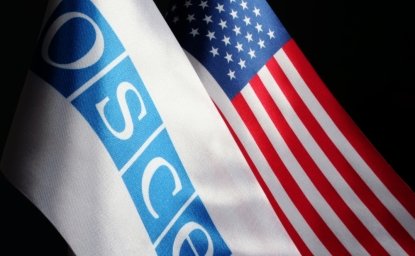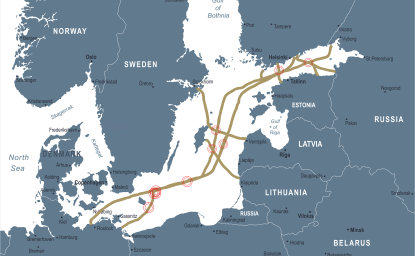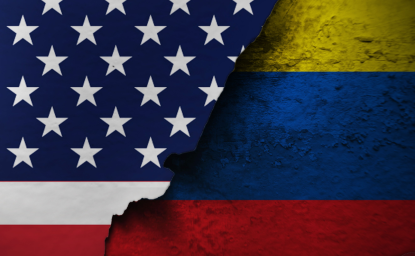Kennan Cable No. 83: Moscow’s Maritime Strategy: Establishing Russia as a Leading Seafaring State


Russia is becoming a maritime nation. As Moscow has sought to position Russia as a global power in a “post-West” world,[1] it has worked to develop the Northern Sea Route (NSR) and increase trade with states across the Middle East and North Africa (MENA), in the Gulf, the Indian Ocean, and in the Pacific. Russia’s leadership intensified this effort to diversify the economy in the wake of Western sanctions following the annexation of Crimea in 2014, and the emphasis on establishing Russia as a maritime power has continued ever since. Indeed, following Moscow’s full-scale invasion of Ukraine in February 2022, the Russian economy to a great extent relies on the ability to exploit and export hydrocarbons and agricultural commodities by sea. Russia’s dependence on the sea is likely to grow, as a result of the sharp deterioration of relations with the Euro-Atlantic community (and the consequent reduction of market share in the West), and the structural shifts underway in global energy markets that make Asia the source of greatest demand. Russia’s position in the world, therefore, will be shaped by its ability to adjust to the demands of being a major seafaring state.
President Putin has stated that “in the shortest possible time, Russia has taken its rightful place among the leading global maritime powers,” that the “scale and versatility of the strategic tasks” the Russian navy has “always solved” bring admiration and pride, and that Russia ensures its naval “presence in almost all regions of the World Ocean.” While he highlights the effort Moscow has undertaken to modernize and strengthen the navy—an “important, if not the key component ensuring national defense and security in the 21st century”—in high-precision, state of the art weapons, he emphasizes that Russia is not just a great naval power, but a maritime one, one of the world’s “leading seafaring nations.” He stresses the breadth of Russia’s maritime experience and capabilities: its “legendary geographical discoveries” (including Antarctica), and its contributions to “valuable knowledge of the unique diversity and beauty of our world through the innovative design and use of the latest equipment.” In so doing, he emphasizes the multifaceted nature of Russia’s maritime power.[2]
Russia’s maritime revival
For many in the Euro-Atlantic community, the idea of Russia as a leading seafaring nation will likely be unconvincing. Russia is usually seen as a continental, land power, albeit one with an occasionally powerful navy, such as during the reign of Peter the Great and more recently in the Cold War, when the Soviet navy under Admiral Gorshkov became a substantial force with global reach. In recent times, though, despite strength in submarines and icebreakers, Russian maritime power has been beset by tragedy and dysfunction.
Russia has certainly long had an ambiguous relationship with the sea. Though it has an extended coastline that touches on three oceans and many seas, its access to the sea is via choke points overseen by potential competitors, which impinges on both Moscow’s export-dependent economy and its ability to wield naval power. Russia’s main naval bases are separated by thousands of miles, fragmenting its force and putting its fleets at an immediate disadvantage to potential adversaries.
Consequently, the navy has had a secondary and inconsistent role in Russian strategy, and though it has won some great victories (such as the battles of Gangut, Chesma, and Sinop), more recently it has endured catastrophic defeats. Indeed, Russia’s defeats in war have mostly come against states projecting sea power, as, for instance, in the Crimean and Russo-Japanese wars. And Russia’s two main competitors throughout the 19th and 20th centuries—the British Empire and the United States—both projected power across the sea against Russian interests. During the Cold War, the sea played an important role in Soviet strategy, especially under the waves, where the race to build ever-more capable nuclear-powered submarines was a defining characteristic of superpower competition. For Moscow, therefore, the sea represents opportunity, but also both a constraint to its own actions and a challenge to its security.[3]
Through the 1990s and into the 2000s, the Russian navy underwent a catastrophic degeneration due to lack of funds, halving its size in terms of ships and equipment and enduring a severe socioeconomic crisis that affected the training and psychological condition of personnel. The sinking of the Oscar II class nuclear submarine Kursk in 2000 symbolized the (many) tragedies that befell the Russian navy during a grim period that lasted for a generation.
Problems continue to afflict the Russian navy, including accidents and fatal fires on ships and submarines. But sustained and substantial investment through the 2010s reversed this decline. Since the mid-2010s, Russian maritime activity has grown in scope and scale, becoming again more obviously global in outlook and reach. “Dual purpose” and civilian maritime activity has a global horizon, including the development of economic infrastructure linking the Atlantic with the Pacific, and the High North to the Caspian Sea and Indian Ocean, as well as expeditions to Antarctica, extending Russia’s claims on the Arctic shelf, and deep-diving in the Mariana Trench in the Pacific.[4]
And the Russian navy has become more active. Perhaps the first high-profile sign of this was Moscow’s deployment of a flotilla to the waters north of Australia at the time of the G-20 meeting in November 2014. But the navy has also established a permanent—and often quite substantial—presence in the eastern Mediterranean. As Valery Gerasimov, Russia’s Chief of the General Staff, pointed out in late 2017, “the intensity of the navy’s missions has increased in the key areas of the global ocean,” with 650 visits and business calls in foreign ports that year. Improvements in combat capabilities made it possible to “extend significantly the military presence of the Russian Federation in the strategic areas of the world.”[5] Submarine activity in the North Atlantic has begun to reach Cold War levels, and, in 2019, a Northern Fleet task force completed a circumnavigation—the first by the Russian navy since the 19th century.[6]
Obvious, too, is the navy’s growing warfighting capability. The navy supported Russia’s intervention in the Syrian civil war from 2015 with logistical support, missile strikes, and even carrier operations. And this capability is evident in Moscow’s war with Ukraine.
In November 2018, the Russian authorities closed the Kerch Strait and opened fire on and captured three Ukrainian vessels. The navy has played a prominent role from the outset of Russia’s full-scale 2022 invasion of Ukraine, even though much of the fighting is being waged by ground forces. It quickly seized command of the Sea of Azov and has supported ground forces, conducting strikes from the Black and Caspian Seas and launching amphibious assaults and resupply missions. Its imposition of a blockade in the Black Sea simultaneously prevents exports, throttling the Ukrainian economy, and imports and resupply. Certainly, the navy has faced setbacks, including the loss of major ships like the heavy cruiser Moskva and Ukrainian attacks on Russian ports. But the Russian navy has played a substantial and largely successful role in the war to date, even as significant parts of it, including strategic assets, have not been deployed to combat.
A maritime strategy?
Russian strategic planning documents such as the Maritime Doctrine, the Fundamentals of State Policy of Russia in the Field of Naval Operations for the Period to 2030, and the Strategy for the Development of Maritime Activities to 2030 set out Moscow’s priorities and intent. These harmonize, broadly, with major state plans such as the National Security Strategy, the Foreign Policy Concept, and Military Doctrine, and are supplemented by regional development thematic planning, such as the web of documents for the development of the Arctic region to 2035, the Strategy for the Development of the Shipbuilding Industry, and the strategic planning of major Russian companies such as Rosneft and Rosatom.
Such documents codify the views set out in Putin’s speeches noted above: the importance of securing Russia’s place as the second-most powerful maritime power in the world, protecting and promoting the country’s global interests, and the deliberate recoupling of the military to geostrategic interests at sea. They describe regional priorities (broadly, competition in the North and West, cooperation in the East and South) and concerns about the impact of regional conflicts, especially in the Middle East, South Asia, and Africa, and about piracy in the Gulf of Guinea and Indian and Pacific Oceans. The navy is intended to respond to such security concerns, execute strategic deterrence, and deal with military threats, acting as a tool for cooperation and diplomacy.
This strategic agenda is both multifaceted, involving a range of civilian and military actors, and very well resourced. Indeed, Moscow prioritized the navy in defense spending through the 2010s to facilitate modernization and development: some 20 percent of military expenditure went to the navy, amounting to some $13 billion a year from 2015 to 2020 ($35 billion a year in purchasing power parity terms). Although the funding is spread across Russia’s four fleets and a flotilla, in overall terms, it equates to the third or fourth largest naval spending program in the world. Spending on civilian shipbuilding is lower, but substantial investments are being made in maritime export infrastructure, shipbuilding facilities, and transport. Expenditure on the NSR particularly is increasing at a robust rate. This significant injection of funding was intended to kick-start modernization and development also in the wider economy. Nearly every shipyard is working at full capacity. There is sufficient demand to keep shipyards loaded with orders for years, and a substantial number of ships are likely to enter service by the end of the decade, especially icebreakers, small surface vessels, and submarines.
There are, of course, plenty of shipbuilding problems, both in the coordination of the different actors involved, and in practical terms. Obsolete production facilities and docks, an aging workforce, wide-ranging Western sanctions, and the strict demands of new designs all mean that it is taking much longer to build naval vessels than Moscow envisaged. Surface ships, in particular, are reaching the navy behind schedule and in piecemeal fashion. Moscow’s responses to these problems—restructuring the cost of borrowing, increasing state subsidies, and making investments—will take time to have a positive effect.
These problems drive a number of debates in Russia about the role of the navy. Some point to the incomplete modernization process, highlighting obsolete torpedo protection and anti-submarine search and sighting systems. Others question the effectiveness of modernizing large ships at the expense of building more, smaller vessels. Still others question the value of having a navy at all.[7] The sinking of the Moskva and the attacks on Russian ports guarantee that the debates will continue.
Nevertheless, the role of the navy within Russian military strategy is growing and evolving. In 2021, for instance, the Northern Fleet was given the status of a military district, which means that the navy’s warfighting tasks have shifted. Traditional tasks do remain important, including supporting ground forces, defending maritime frontiers, and ensuring the sustainability of Russia’s naval nuclear deterrent. But the procurement of long-range weaponry, such as the Kalibr missile family, lend the navy a more flexible and offensive role in military strategy, especially in terms of conducting strikes against enemy land-based facilities.[8] Debates continue over whether the navy is equipped to be an ocean-going fighting force or one that is more coastal in capabilities.
But two points stand out. First, the broader picture is one of Moscow using the navy as a tool both to project global influence through maritime diplomacy,[9] and to better connect its military capability to the pursuit of its economic interests. Second, the main focus of the navy is not fleet against fleet, but fleet against shore: the primary emphasis is not on seeking command of the sea, but in striking the enemy’s critical infrastructure.
Russia and the global maritime turn
Sea power is one of the most underrated aspects of the great power competition. Moscow’s agenda to develop its maritime capacity, both civilian and naval, is in line with a maritime turn in international affairs. Some 80 to 90 percent of global trade by volume is by sea, and shifts underway in the global energy market emphasize this fact. China, Japan, India, and Australia, among others, have all increased spending on their navies and maritime capabilities.
It is also in line with the Russian leadership’s strategic views of an emergent, longer-term contest for the global commons. It fits both Moscow’s effort to diversify to a post-West world, with the increasing prominence of the Pacific Ocean in international affairs, and also what it sees as a global geo-economic contest for access to natural resources, transit routes, and markets. And it is part of Moscow’s specific contest with the Euro-Atlantic community, from the High North where, according to Gerasimov, the US and its allies seek to “intensify the geopolitical confrontation with Russia” and “dispute” Russia’s right to use the Northern Sea Route, to the Asia-Pacific region, which could be destabilized, for instance, through the establishment of AUKUS, the security pact between the US, the UK and Australia.[10]
Certainly, Russia retains many traditional continental power characteristics. Moreover, it faces all the usual problems of strategy, including difficulty coordinating the required resources, an inefficient chain of command, and dynamic competition with adversaries. Consequently, the implementation and practical realization of plans is slower than intended, and the extra sanctions imposed by the Euro-Atlantic community since Moscow’s full-scale invasion of Ukraine will complicate and slow the process yet further.
But the scale of Moscow’s investment over the last decade, as well as the persistence with which it pursues its ambition to be one of the world’s leading seafaring nations—with the changes in capabilities and functions of its navy—are driving change. Russia’s intention to be the second-most powerful maritime power in the world is certainly ambitious, given the constraints imposed by the war and the effort by other states, including China, to enhance their maritime power. The navy may receive less financial support as Russia’s ground forces are rebuilt, but it is likely to have a more prominent role in strategic deterrence while this is happening.[11]
Indeed, the war in Ukraine reflects and emphasizes this shift towards, and greater reliance on, the sea. The geo-economic significance of the Crimean Peninsula, in terms of the command over the Sea of Azov and influence in the Black Sea, underpins Moscow’s current efforts in the war. And the sharp suspension of relations with the Euro-Atlantic community obliges Moscow to accelerate trade with the Middle East and North Africa and the Asia-Pacific regions. Even as its forces wage war on Ukraine and in the Black Sea, the Russian leadership published a strategy for the development of the NSR looking ahead to 2035, launched a new nuclear icebreaker, and reemphasized its interest in Antarctica.[12]
As the sea is becoming essential to Russia’s domestic development and international economic, diplomatic, and military presence, Moscow’s strategy explicitly seeks to link these dimensions. While Russia is not a traditional sea power, it is time to recognize Russia as a state with a strategy for developing and deploying power at sea. Russia’s emergence as a maritime power is not only a regional- and operational-level naval challenge, but a strategic, state-level one. It is an essential characteristic of Moscow’s wider strategy for positioning Russia as a power with global influence in a period of geo-economic competition.
Monaghan and Connolly are co-editors of The Sea in Russian Strategy (forthcoming, 2023). They are grateful to the Russia Strategic Initiative, U.S. European Command, which supported a research project on which this publication is based. The views in the publication do not necessarily represent the views of the United States Department of Defense.
[1] “Statement by Sergey Lavrov,” Munich Security Conference, February 18, 2017, https://securityconference.org/en/medialibrary/asset/statement-by-sergey-lavrov-1300-18-02-2017/
[2] “Glavniy voenno-morskoi parad,” Website of the Presidential Administration, July 26, 2020, http://kremlin.ru/events/president/transcripts/speeches/63753; “Vystuplenie na Glavnom voenno-morskom parade,” Website of the Presidential Administration, July 25, 2021, http://kremlin.ru/events/president/news/6624; and “Prezident zaslushal doklad glavkoma Nikolaya Evmenova o khode kompleksnoi arkticheskoi ekspeditsii,” Website of the Presidential Administration, March 26, 2021, http://kremlin.ru/events/president/transcripts/65229
[3] For a concise overview of the history of the Russian navy, see Andrew Monaghan and Richard Connolly, eds., The Sea in Russian Strategy (Manchester, UK: Manchester University Press, forthcoming, 2023).
[4] “Russian Navy Research Ship Heads to Antarctica,” Maritime Executive, November 6, 2015, https://maritime-executive.com/article/russian-navy-research-ship-heads-to-antarctica; and “Russian Submarine Vityaz Reached the Bottom of the Mariana Trench,” Russian Geographical Society, May 13, 2000, https://www.rgo.ru/en/article/russian-submarine-vityaz-reached-bottom-mariana-trench
[5] Valery Gerasimov, “Zasedaniye Kollegii Ministerstva Oborony RF po voprosu ‘O khode vypolneniya ukazov Prezidenta Rossiiskoi Federatsii ot maya 7, 2012 g, i razvitii Vooruzhonnykh Sil Rossiiskoi Federatsii,” Website of the Ministry of Defence, November 7, 2017, https://function.mil.ru/news_page/country/more.htm?id=12149743@egNews
[6] “Russia Sends Warships Towards Australia Before G20 Meeting,” Sydney Morning Herald, November 12, 2014, https://www.smh.com.au/politics/federal/russia-sends-warships-towards-australia-before-g20-meeting-20141112-11lc4z.html; “NATO: Russian Submarine Activity Equals Cold War Levels,” The Independent Barents Observer, February 3, 2016, https://thebarentsobserver.com/ru/node/396; and “Northern Fleet Task Force Arrives to Kronstadt After Circumnavigation,” Tass, July 12, 2019, https://tass.com/defense/1070077?utm_source=google.com&utm_medium=organic&utm_campaign=google.com&utm_referrer=google.com
[7] “Kakie korabli nuzhni na more?” Nezavisimoe voennoe obozrenie, December 2, 2021, https://nvo.ng.ru/realty/2021-12-02/more.htm?id=12449283@egNews; and “Nuzhen li Rossii silni flot?” Topwar, March 9, 2021, https://topwar.ru/178933-chernovik-1.html
[8] Website of the Ministry of Defence, “Missions: Navy,” https://eng.mil.ru/en/structure/forces/navy/mission.htm
[9] “Russia, China, Iran Launch Naval Drills,” Moscow Times, March 16, 2023, https://www.themoscowtimes.com/2023/03/16/russia-china-iran-launch-naval-drills-a80488; and “Joint Naval Exercise by South Africa, Russia and China Kick Off in Indian Ocean,” Tass, February 17, 2023, https://tass.com/defense/1577747
[10] Website of the Ministry of Defence, “Tezisy vystupleniya nachalnika Generalnovo shtaba VS RF—pervovo zamestitelya Ministra oborony RF general armii Valeriya Gerasimova na brifinge dlya voennykh attashe inostrannykh gosudarst,” December 22, 2022, https://function.mil.ru/news_page/country/more.htm?id=12449283@egNews
[11] “Strategicheskie raketonostsy TOF otrabotayut nanesenie udarov po korabelnym gruppam “protivnika” v tsentralnoi chasti Tikhovo okeana—Shoigu,” Tass, April 17, 2023, https://www.militarynews.ru/story.asp?rid=1&nid=592461&lang=RU
[12] “Russia Launches New Nuclear Icebreaker as It Looks East for Northern Sea Route Shipping,” High North News, November 23, 2022, https://www.highnorthnews.com/en/russia-launches-new-nuclear-icebreaker-it-looks-east-northern-sea-route-shipping; and “Putin Calls for Prioritising Arctic Development, Beefing up Presence in Antarctica,” Tass, November 10, 2022, https://tass.com/science/1534773
Authors

Senior Associate Fellow, Royal United Services Institute, London; Non-Resident Associate Fellow, NATO Defense College
Director, Eastern Advisory Group; Associate Fellow, Royal United Services Institute, London

Kennan Institute
The Kennan Institute is the premier US center for advanced research on Eurasia and the oldest and largest regional program at the Woodrow Wilson International Center for Scholars. The Kennan Institute is committed to improving American understanding of Russia, Ukraine, Central Asia, the South Caucasus, and the surrounding region through research and exchange. Read more

Explore More
Browse Insights & Analysis
The OSCE is a Good Value for America




